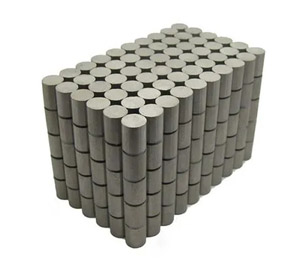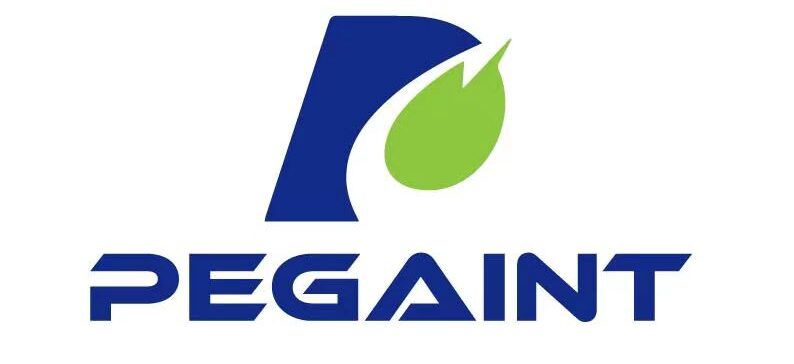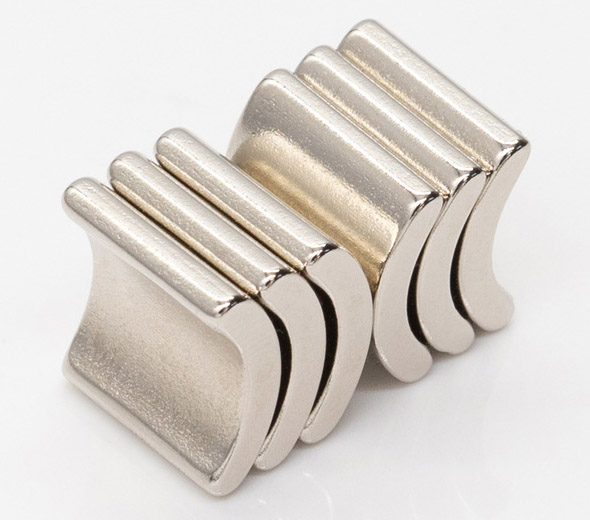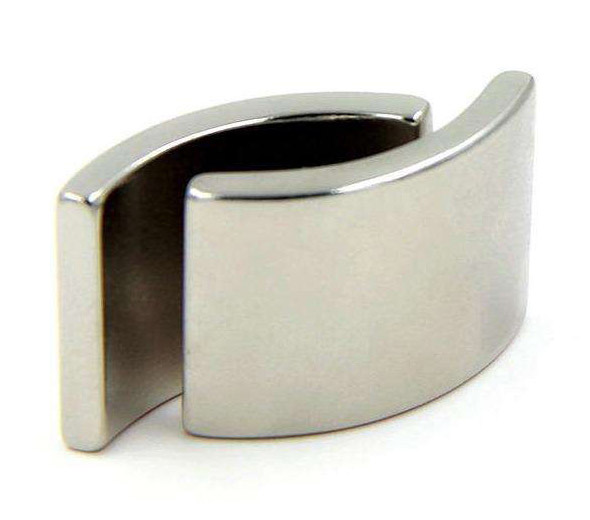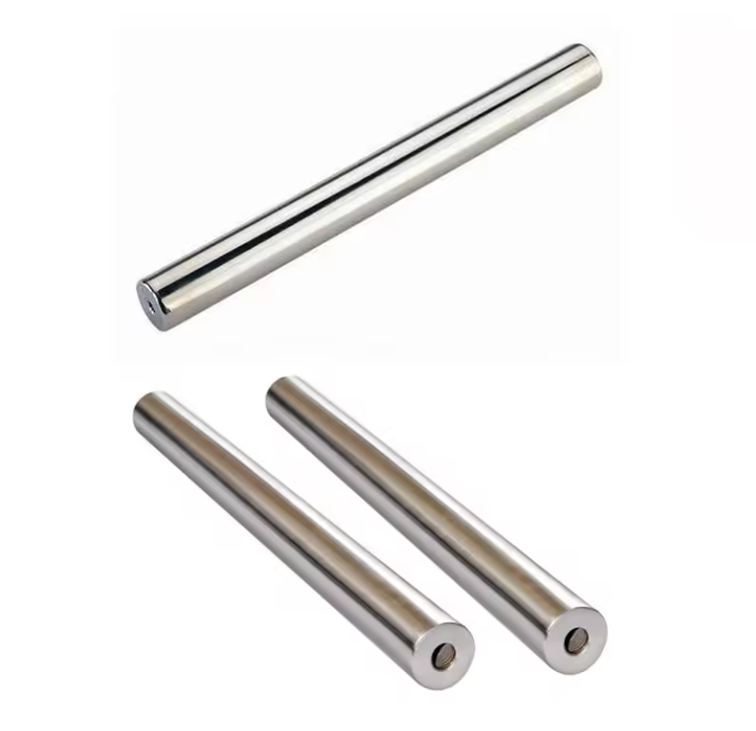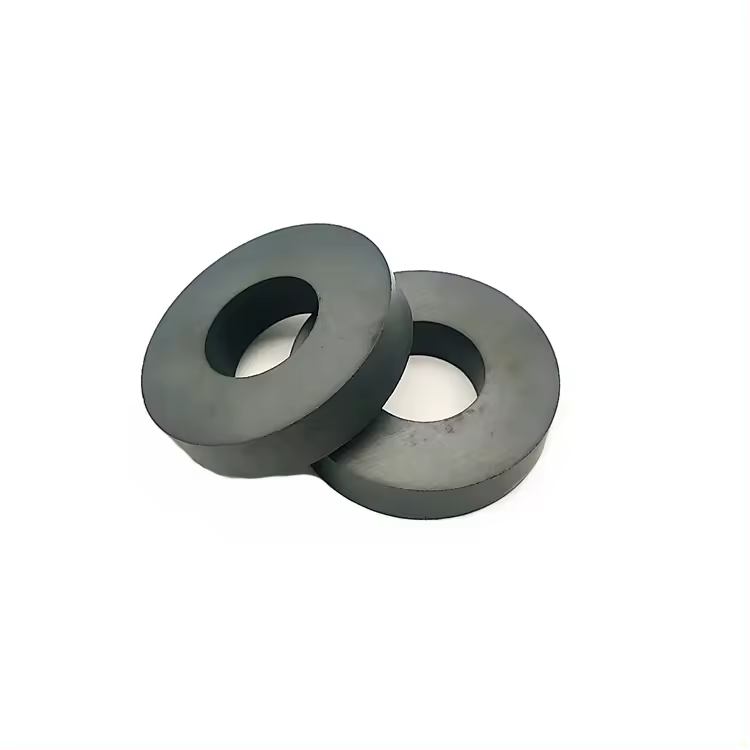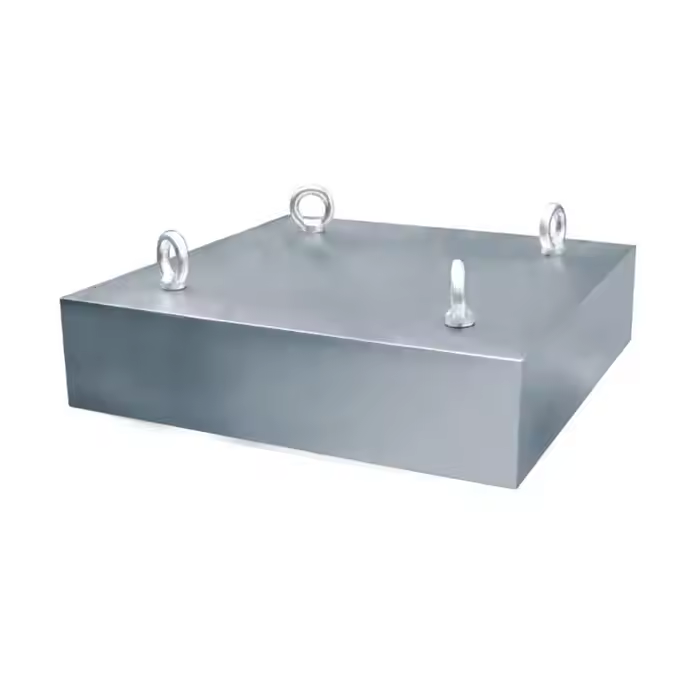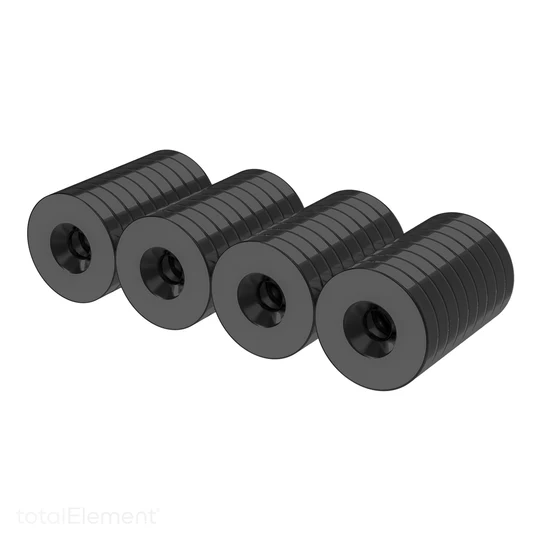Arc Neodymium magnets are extremely strong for their size. Shapes include rings, blocks, discs and custom. To prevent unwanted oxidation, neodymium magnets are usually finished with a zinc, nickel or epoxy coating.
Manufacturing – In general, the elements are melted together and milled into a powder that is dry-pressed to shape in the presence of a magnetic field.
The material is then sintered, ground to dimension, magnetized and tested. They are called “rare earth” magnets because the elements of neodymium are classified as such in the lanthanides section of the Periodic Table of the Elements.
We fabricate and custom-produce a comprehensive line of Neodymium Magnets and precision assemblies specific to design requirements in a number of markets, including: aerospace & defense, medical devices, motorsports and oil & gas.
Arc Neodymium magnets are known for their high magnetic strength, making them suitable for various high-performance applications. Here are the typical technical parameters for high-performance arc-shaped Neodymium magnets:
1. Material Composition: – Neodymium (Nd): 29-32% – Iron (Fe): 64-69% – Boron (B): 1-2% – Small amounts of other elements such as Dysprosium (Dy)and Praseodymium (Pr) may be included to enhance specific properties.
2. Magnetic Properties: – Residual Induction (Br): 12,000 – 14,800 Gauss (1.2 – 1.48 Tesla) – Coercive Force (Hc): 10,000 – 12,000 Oersteds (796 – 955 kA/m) – Intrinsic Coercive Force (Hci): 12,000 – 35,000 Oersteds (955 – 2785 kA/m) – Energy Product (BHmax): 33 – 55 MGOe (263 – 439 kJ/m³)
3. Physical Properties: – Density: 7.4 – 7.5 g/cm³ – Electrical Resistivity: 150 – 200 μΩ·cm – Thermal Conductivity: 7.7 – 8.7 W/(m·K)
4. Temperature Stability: – Maximum Operating Temperature: 80 – 230°C (176 – 446°F), depending on the specific grade – Curie Temperature: 310 – 380°C (590 – 716°F) – Neodymium magnets can lose their magnetic properties at higher temperatures, hence the need for temperature-stabilized grades for high-temperature applications.
5. Mechanical Properties: – Hardness: Vickers 500 – 650 HV – Compressive Strength: 1,100 – 1,200 MPa – Tensile Strength: Low, brittle material; care must be taken to avoid mechanical stress
6. Corrosion Resistance: – Neodymium magnets are prone to corrosion, so they are typically coated or plated with materials such as Nickel (Ni), Zinc (Zn), Gold (Au), or Epoxy to protect them from oxidation and moisture.
7. Tolerance: – Typical machining tolerance for Neodymium magnets is ±0.05mm, though this can vary based on specific manufacturing capabilities and requirements.
Arc Neodymium magnets are highly versatile and used in a wide range of applications due to their strong magnetic properties and customizable shapes. Key applications include:
1. Electric Motors: Arc-shaped Neodymium magnets are extensively used in brushless DC motors, stepper motors, and other types of electric motors, where their shape allows for efficient magnetic field distribution and improved motor performance and efficiency.
2. Generator: They are used in high-performance generators, including those in wind turbines and other renewable energy systems, to enhance energy conversion efficiency.
3. Magnetic Couplings: These magnets are ideal for magnetic couplings, providing a non-contact method of torque transfer in pumps and mixers, especially in corrosive or high-temperature environments.
4. Magnetic Bearings: Arc Neodymium magnets are used in magnetic bearing systems, offering frictionless support for rotating parts and enhancing the longevity and reliability of machinery.
5. Sensors and Actuators: Their precise magnetic field control makes them suitable for various sensors and actuators in automotive, industrial automation, and aerospace applications, contributing to high accuracy and performance.
6. Medical Devices: Neodymium magnets are used in medical equipment such as MRI machines and other diagnostic tools, where their strong magnetic fields are essential for high-quality imaging and operation.
7. Loudspeakers and Audio Equipment: Arc Neodymium magnets are favored in high-quality loudspeakers, headphones, and other audio equipment for their ability to produce clear, high-fidelity sound.
8. Magnetic Resonance Imaging (MRI): Their strong and stable magnetic fields make them ideal for use in MRI machines, contributing to high-resolution imaging.
9. Automotive Industry: These magnets are used in electric and hybrid vehicle motors, as well as in various sensors and actuators within vehicles, enhancing performance and fuel efficiency.
10. Industrial Automation: Arc-shaped Neodymium magnets are integral to robotic systems, conveyor belts, and other automated machinery, providing precise control and high performance.
11. Scientific Instruments: They are used in advanced scientific research and laboratory equipment, where specific magnetic fields are required for experiments, contributing to accurate and reliable results.
12. Aerospace and Defense: Their ability to maintain magnetic properties under extreme conditions makes them suitable for various aerospace and defense applications, including control systems, sensors, and actuators.
